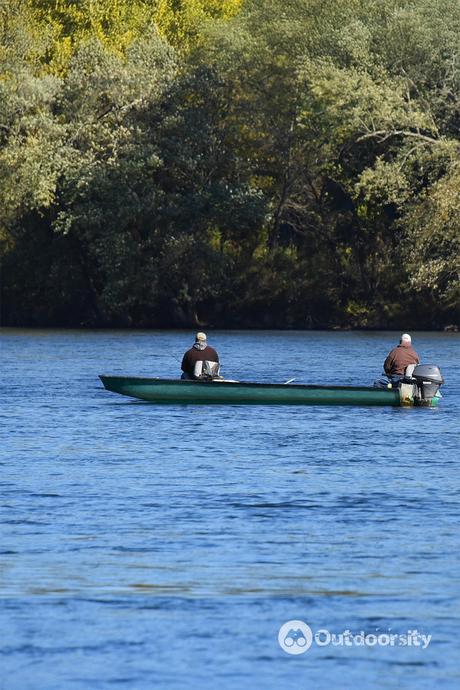Arkansas's White River offers some of the best fly fishing in the United States. With its crystal-clear waters and abundant trout population, it's a paradise for anglers of all skill levels.
The White River is home to rainbow, brown, and cutthroat trout, including the state record cutthroat weighing over 10 pounds.Fly fishing on the White River is a year-round activity. The river's tailwater sections below Beaver Lake, Table Rock Lake, and other reservoirs create ideal conditions for trout to thrive.
You'll find 80 miles of prime fishing spots along this scenic waterway.
To make the most of your White River fly fishing adventure, you'll need the right gear and techniques.

Local guides can help you choose the best flies and show you the most productive areas. Many outfitters offer full-day trips with shore lunches and all necessary equipment, making it easy for you to enjoy this world-class fishery.
Key Takeaways
- The White River offers year-round fly fishing for rainbow, brown, and cutthroat trout
- Local guides can provide expertise, equipment, and access to prime fishing spots
- Proper gear and techniques are essential for a successful fly fishing experience on the White River
Essentials of Fly Fishing Gear for the White River
Getting the right gear is key for fly fishing success on the White River. You'll need a good rod, reel, line, and flies to make the most of your trip.
Choosing the Right Fly Rod
For fly fishing the White River, a 9-foot 5-weight or 6-weight rod works well. This size gives you the power to cast in windy conditions and handle larger trout.
Look for a medium-fast action rod. It will help you cast accurately and feel subtle bites. Some good options include:
- Orvis Clearwater
- TFO Professional II
- Sage Foundation
If you're new to fly fishing, try a rod and reel combo. These often come with line and backing already set up.
Reels and Line Selection
Your reel should match your rod weight. A large arbor reel is best. It helps you reel in line faster when fighting big trout.
For line, use:
Make sure to bring extra tippet and leaders. The White River's rocks can be rough on your gear.
The Fly Box: Patterns and Tips
Stock your fly box with a mix of dry flies, nymphs, and streamers. Some must-have patterns for the White River include:
Dry flies:
Nymphs:
Streamers:
Bring flies in sizes 12-18. Don't forget to pack some midges too. They can be key when trout are picky.
Techniques for Fly Fishing in the White River
Mastering fly fishing in the White River requires skill, patience, and knowledge. You'll need to read the water, perfect your casting, and adapt to seasonal changes.
Reading the River for Success
Look for areas where trout are likely to feed. Riffles, runs, and pools are prime spots.
Pay attention to current seams where slow and fast water meet. These areas often hold trout waiting for food to drift by.
Use polarized sunglasses to spot fish. Look for darker shapes against the lighter riverbed.
Watch for subtle movements or flashes that might indicate feeding trout.
Notice insect activity on the water's surface. This can clue you into what the fish are eating. Match your fly selection to the insects you see.
Effective Casting Methods
Practice your roll cast for tight spots with trees behind you. This technique keeps your line low and is great for avoiding snags.
Perfect your reach cast to combat drag. This helps your fly drift naturally with the current, making it more appealing to trout.
Try the bow and arrow cast in super tight spaces. This short-range technique is perfect for dropping your fly into small pockets of water.
Use a double haul for extra distance when needed. This can help you reach distant feeding trout or cast heavy flies.
Seasonal Strategies
In spring, focus on nymph fishing as water levels rise. Use heavier flies to get down to where trout are holding in faster currents.
Summer brings dry fly action. Be ready with small midges and mayfly imitations. Fish in early mornings and evenings when temperatures are cooler.
Fall is prime time for streamer fishing. Big brown trout get aggressive before spawning. Use larger, flashy flies to trigger strikes.
Winter calls for slow, deep presentations. Fish deeper pools with small nymphs or midges. Be patient and make precise casts to cold, lethargic trout.
The White River in Arkansas is a fly fishing paradise. You'll find plenty of spots to cast your line and reel in some trout.
Start your journey near Cotter, Arkansas. This area is known for its high trout population. You can catch rainbow, brown, and cutthroat trout here.
As you move downstream, you'll come across wider sections of the river. These spots are great for wading and offer different fishing techniques.
Look for deep pools and eddies. Trout love to hide in these areas. Cast your fly near fallen trees or large rocks for the best chance of a bite.
Don't forget to check out the tailwaters below the dams. These cool waters are perfect for trout and often yield big catches.
Remember to bring a variety of flies. The Sunday Special pattern is popular during caddis hatches. It's great for attracting brown trout.
Always check local regulations before you fish. Some areas may have special rules or catch limits. Stay safe and enjoy your White River fly fishing adventure!
Conservation and River Etiquette on the White River
The White River is a premier fly fishing destination. To keep it that way, you need to practice good conservation and river etiquette.
When fishing, use barbless hooks. They're easier to remove and cause less harm to the fish.
Always wet your hands before handling trout to protect their slime coat.
Release fish quickly and gently. If you plan to keep a fish, follow size and bag limits strictly.
Pack out all your trash. Leave no trace of your visit. This helps keep the river clean and beautiful for others.
Be mindful of other anglers. Give them space and don't crowd their fishing spots. A good rule is to stay at least 50 feet away from other fishermen.
Trout populations face challenges. You can help by reporting any signs of pollution or fish kills to local authorities.
Support local conservation efforts. Many groups work to protect the White River. Consider joining or donating to these organizations.
When wading, be careful not to disturb the riverbed too much. This can harm fish eggs and insect life.
Lastly, educate others about river conservation. Share your knowledge with new anglers you meet on the water.
Conclusion
The White River in Arkansas is a fly fishing paradise. You'll find clear waters and lots of trout waiting for you.
Don't forget to pack the right gear and flies for your trip. Timing matters too - each season offers something special.
Want to catch big trout? Try using streamers or nymphs. For a fun challenge, go dry fly fishing when insects are hatching.
Remember to check the water levels before you go. High or low water can change how you fish.
Most of all, enjoy your time on the river. Take in the beauty around you as you cast your line. With practice and patience, you'll soon be catching trophy trout on the White River.

